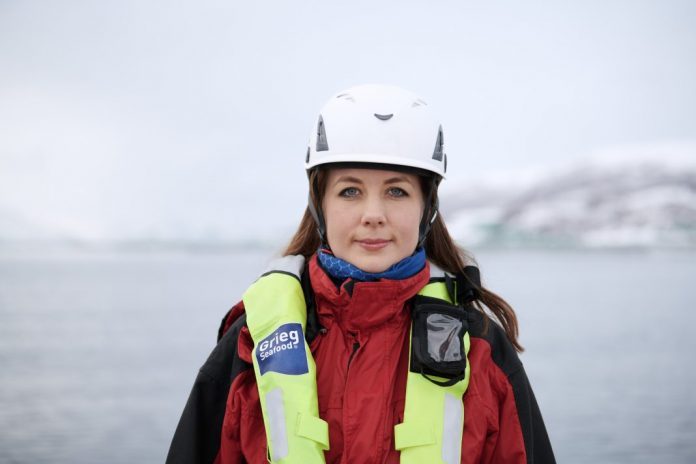Grieg Seafood maintains plans for triploid salmon in particularly demanding production area.
Norway Royal Salmon (NRS) was granted nine so-called “green licenses” in 2014 for the use of triploid (sterile) salmon, which eliminates the risk of escaped farmed salmon reproducing with wild salmon.
Ended
After nine years of operation, however, experience shows that the triploid salmon appears to be more vulnerable to bacterial and viral diseases.
NRS has therefore had a dialogue with the Ministry of Trade, Industry and Fisheries and the authority has come to the conclusion that they adjust the condition of use of sterile fish until there is a decision of the authorities on whether triploid production is fish welfare sound or not.
The Norwegian Food Safety Authority has decided that triploid smolt should not be released after spring 2022 and that all triploid salmon in the sea must be completed by the end of 2023.
Read more: Minister eyes up major salmon farming expansion in Atlantic Canada
Extensive
NRS’ competitor Grieg Seafood has announced a comprehensive commitment to triploid salmon at the company’s ambitious growth plan in Newfoundland and Labrador on the Canadian east coast. Grieg Seafood NL has a total production capacity of 30,000 tonnes of salmon and will harvest its first fish in 2022.
The company is not allowed to use diploid (normal) salmon in the region. If so, they could only use eggs from the local salmon strain Saint John River, which the two competitors Cooke Aquaculture and Mowi use.

Experiences
But the Norwegian Food Safety Authority’s decision will have no impact on Grieg Seafood’s plans in Eastern Canada.
“Not as of now. We are developing production in Newfoundland step by step, building on different experiences, new knowledge that constantly comes in and adjusts along the way,” Grieg Seafood’s communications director Kristina Furnes told SalmonBusiness.
This can mean weak salmon in one of the planet’s most demanding areas to farm salmon in. Grieg is apparently comfortable with that risk.
“No one has farmed salmon in Placentia Bay before, and it is far from the area the other fish farmers are in, so their own experiences must be made here. Based on the surveys that have been carried out, Placentia Bay appears to be a well-suited fish farming area for salmon – with good current conditions, deep water and conditions reminiscent of Norway,” she said.
All alone
“We have mitigation measures for temperature fluctuations, such as larger smolts, deep nets (40 meters) and locations with good flow (which is important in cold temperatures). We are also completely alone in the area, and we will be working on new and modern equipment and in best practice,” continued Furnes.
“We build up our operations based on experiences with triploid salmon in both Norway and the UK, and bring developed knowledge in various areas, such as the timing of postponement, feed composition, conditions in fresh water, etc. We also have our own hatchery in the region and our own control of smolt, and it looks good so far. At the same time, we are developing the region step by step, so that we can adjust along the way and adapt to the experiences we gain in practice in Placentia Bay,” added Furnes.


